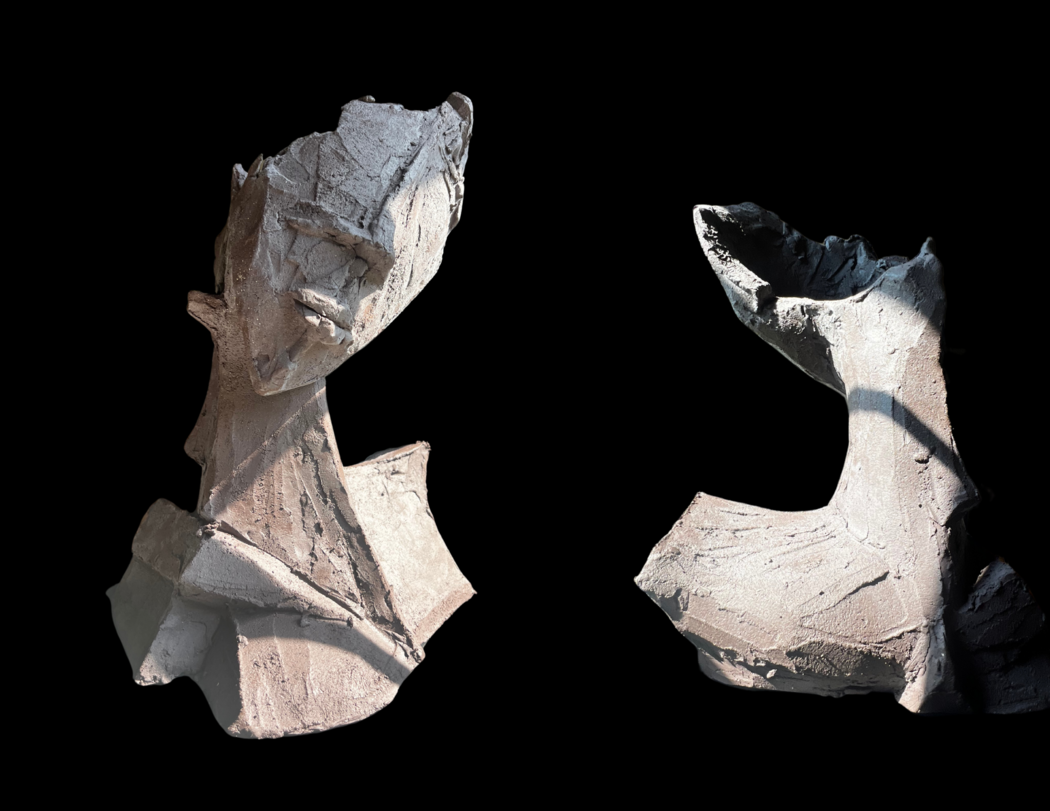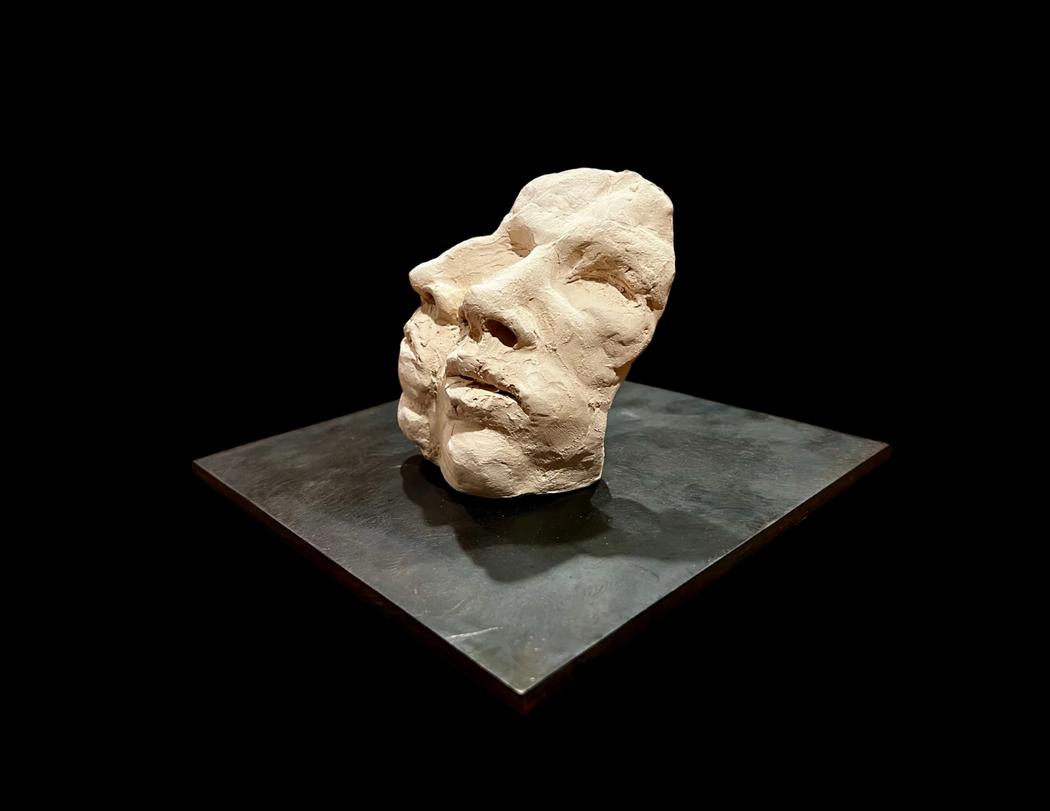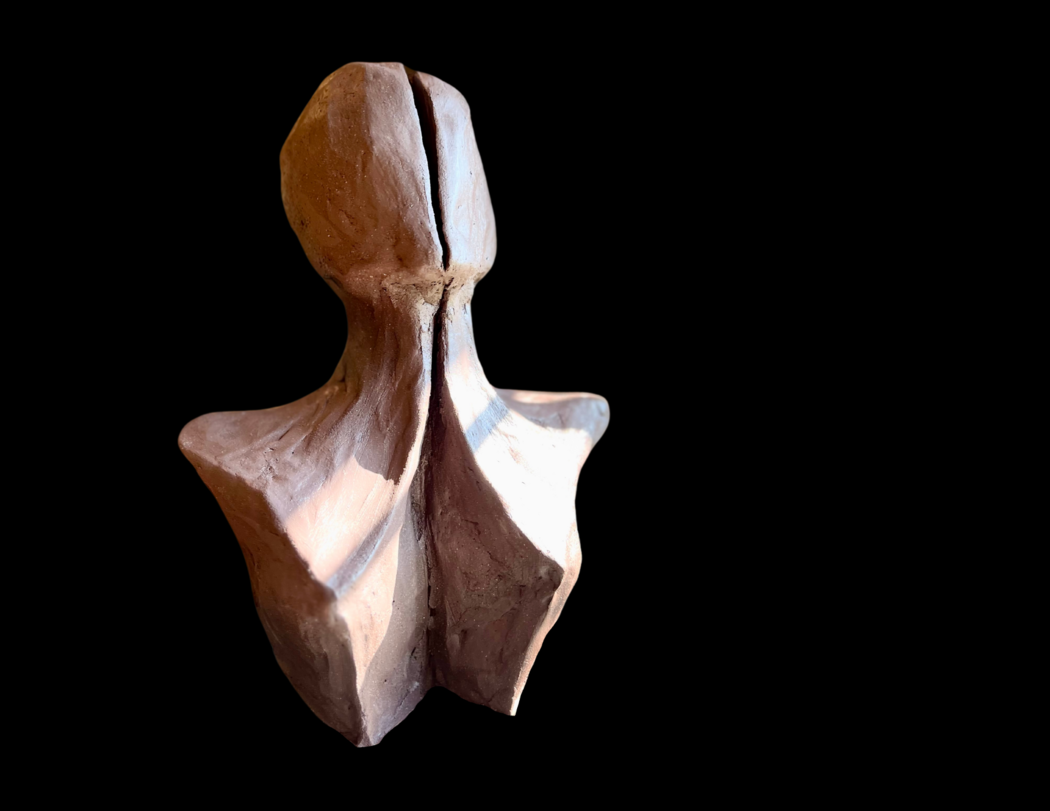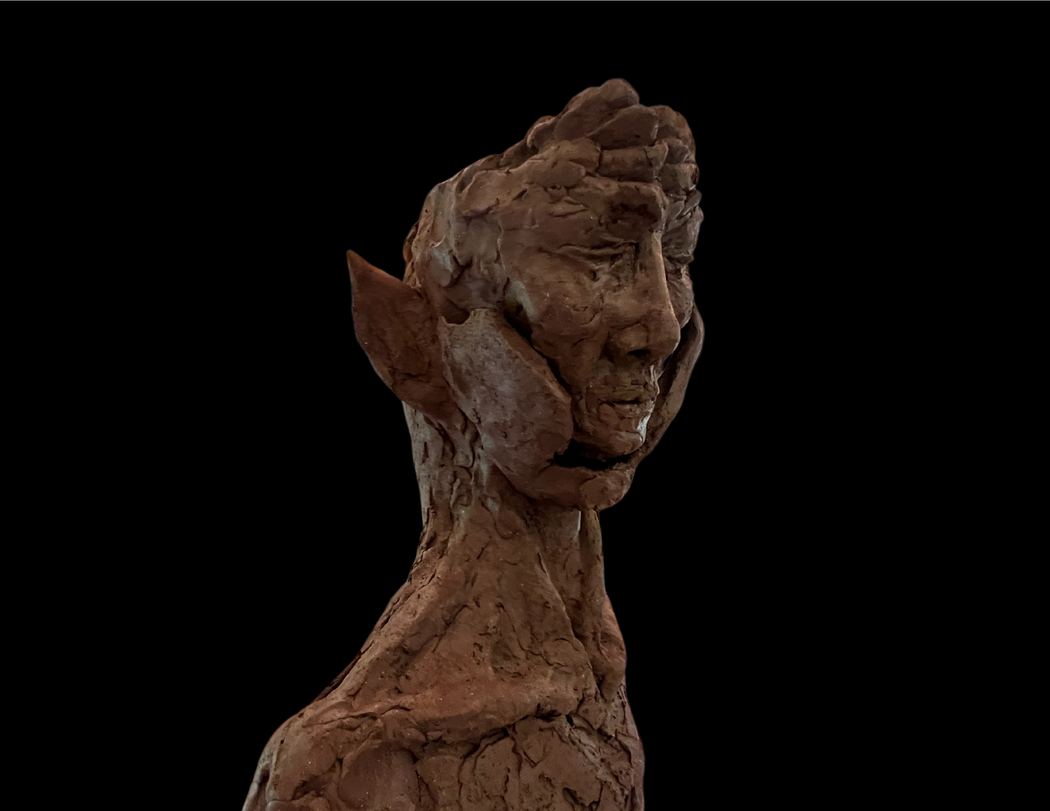Aleksandra Scepanovic
Where do you live: I live between Brooklyn and Woodstock, NY.
Your education:
Art: Art Students League, Philippe Faraut Studio, The Florence Academy of Art, Cornell Creative Arts Center, Woodstock School of Art;
General: University of Archaeology, Belgrade, Serbia; Fashion Institute of Technology, NYC.
Describe your art in three words: Fracture, Identity, Transformation.
Your discipline: Sculpture.
Website | Instagram
Your work is deeply influenced by your experiences during the Balkan conflicts and your career as a war reporter. How do you translate the emotional intensity and turmoil of those memories into your sculptures?
The emotional intensity of my past finds its way into the physicality of my sculptures. The clay, in its pliable state, mimics the fragility and tension that existed during those times of conflict. The way I mold the material often reflects the sense of displacement and disorientation I felt—shapes teetering between balance and collapse. War, for me, was a constant confrontation with the unknown, and my work seeks to engage viewers with the unease that comes from navigating chaos while seeking peace.
 Aleksandra Scepanovic | 13, I Think | 2024
Aleksandra Scepanovic | 13, I Think | 2024
Migration and displacement are central themes in your work. How do you think your sculptures help viewers connect with these experiences on a personal level?
Migration, for me, is more than a physical movement; it is an internal shift in identity and belonging. When visitors see my work, I hope they recognize pieces of their own fractured experiences. Displacement is not only about leaving a homeland; it’s about the continuous search for home within yourself. My sculptures invite people to explore the cracks and breaks, not as weaknesses, but as spaces where new life emerges. The act of looking closely at these ruptures, these interruptions in form, is my way of connecting others to their own journeys of finding wholeness amidst fracture.
You describe your sculptures as reflecting the balance between chaos and order, war and peace. Can you share a specific piece that captures this tension particularly well, and explain what it represents?
One piece that stands out is The Vanishing. In this sculpture, I explored the idea of something slowly disappearing yet remaining palpable, its form incomplete but still standing. It reflects the tension between destruction and perseverance, much like the moments of war when survival seems precarious, yet somehow inevitable, at least in retrospect. The piece embodies the balance between forces of war that try to erase and the quiet defiance of existing despite it.
 Aleksandra Scepanovic | Cluster | 2024
Aleksandra Scepanovic | Cluster | 2024
How did your transition from war reporting to sculpture impact your healing process? Did you find that art offered a form of therapy or catharsis?
In recent years, art has become a channel for what I couldn’t put into words during my time as a war reporter. Where journalism was about facts and immediacy, sculpture allows me to slow down and allow my hands tell the stories my mind has long held onto. The tactile nature of working with clay, shaping and reshaping, has been deeply therapeutic. It’s not about resolving the pain but learning to live alongside it. Sculpture has offered me a way to heal by creating from the same place that once held so much turmoil.
Working in Woodstock, NY, alongside other sculptors, how has this environment influenced your creative process or the themes in your art?
Woodstock offers a kind of stillness that I find essential in balancing the complexity of the themes I explore. The community of sculptors I work with is collaborative, not competitive, which mirrors the ethos of rebuilding that runs through my art. In a way, the natural landscape and the human landscape here—both raw, untouched, and always evolving—reflect the dualities I navigate in my work. There’s a quiet encouragement from the environment and the people around me to keep searching, keep creating, and find peace in the process.
 Aleksandra Scepanovic | Inbetween | 2024
Aleksandra Scepanovic | Inbetween | 2024
The process of working with clay is often tactile and intimate. How does the medium itself contribute to the emotional quality of your work?
Clay has a memory of touch, and that is indescribably powerful to me. When you press into it, it responds, records, and even resists in some ways. This back-and-forth creates a relationship with the material that feels like a conversation—one rooted in emotion. The medium of clay allows me to work through the fragility of life, but also its resilience. The softness of wet clay and the hardness it takes on once fired symbolize the transformations we endure as individuals and communities. The very process echoes my internal world—pliable, yet capable of holding form after enduring the fire.
 Aleksandra Scepanovic | Birthing | 2024
Aleksandra Scepanovic | Birthing | 2024
Can you discuss how your upbringing in socialist Yugoslavia has shaped your perspective on identity and belonging, which are recurring subjects in your sculptures?
Growing up in socialist Yugoslavia, identity was shaped by a collective narrative, not by the individual. That experience has made me question the nature of identity itself—whether it is something imposed or discovered. My sculptures often deal with fragmentation because that’s how I experienced my own sense of self during those years and through the later collapse of the country. In many ways, I am still exploring what it means to belong—to a place, to a people, or even to an idea. The struggle between the self and the collective continues to inform how I approach every new piece.

Leave a Reply